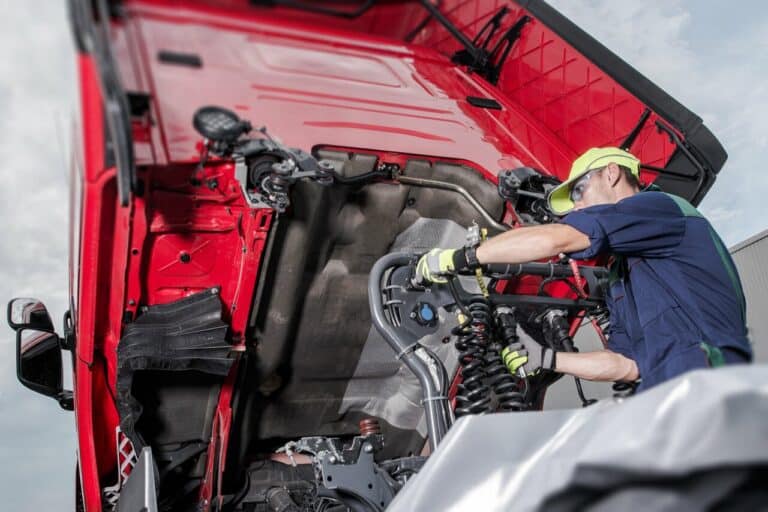Effective fleet management involves identifying, assessing, and mitigating potential risks, ensuring a safe and compliant working environment for your drivers and vehicles. A comprehensive risk management strategy underpins the success of your fleet operations, promoting a culture of safety, minimising incidents, and safeguarding your organisation’s reputation.
Risk assessment and mitigation are crucial components of a responsible and well-managed fleet, helping organisations develop a proactive approach to safety and compliance. By systematically identifying, assessing, and addressing risks, fleet operators can establish a clear roadmap for prioritising improvement efforts, allocating resources effectively, and achieving optimal safety and performance outcomes.
In the following sections, we will delve deeper into the principles of risk assessment and mitigation, offering practical advice and strategies for embracing a proactive approach to fleet safety and compliance. As your guide to navigating the challenges of risk management within fleet operations, The Fleet Safety Academy can help unlock the full potential of risk assessment and mitigation, ensuring your organisation upholds the highest standards of safety and excellence.
What is the role of risk assessment and mitigation in fleet management?
The importance of effective risk assessment and mitigation within fleet management cannot be overstated. In this article, we will explore key aspects of risk management, providing practical guidance on creating a comprehensive risk mitigation strategy to ensure your fleet operates safely and efficiently.
1. Identifying Potential Risks in Fleet Operations
The first step in managing risk within your fleet is to identify potential hazards that may impact drivers, vehicles, and overall operations. This can be accomplished through a thorough review of your fleet’s activities, as well as collecting and analysing historical data on incidents and near misses. Key areas to consider when identifying potential risks include:
– Collision risks, such as distracted driving, speeding, or adverse weather conditions
– Vehicle-related issues, such as inadequate maintenance or component failure
– Regulatory risks, including non-compliance with transportation laws, licensing, or training requirements
– Operational risks, such as ineffective route planning or poor driver scheduling
2. Assessing the Severity and Probability of Identified Risks
Once you have identified potential risks, the next stage in the risk management process is to assess the severity and probability of each identified hazard. This involves determining the potential impact on your fleet operations and assigning a likelihood rating based on historical data, industry trends, or expert judgement. The severity of a risk may be assessed using factors such as:
– The likelihood of harm or damage to drivers, vehicles, or the environment
– The potential legal or financial consequences
– The potential impact on operational efficiency and productivity
3. Developing and Implementing Risk Mitigation Strategies
With your risks thoroughly assessed, the next step is to develop and implement appropriate risk mitigation strategies. This may include preventative measures to address the root causes of identified hazards or reactive measures to minimise the impact of incidents that may occur. Key strategies for mitigating risk within your fleet include:
– Implementing driver training programmes to improve safety awareness and skills, such as defensive driving techniques
– Adopting telematics technology to monitor driver behaviour and vehicle performance, providing real-time data for proactive risk mitigation efforts
– Implementing stringent maintenance schedules and conducting regular vehicle inspections to ensure asset reliability and safety
– Ensuring full compliance with regulatory requirements, including driver certification, vehicle inspections, and record-keeping
– Employing route optimisation software to improve efficiency, flexibility, and safety in fleet operations
4. Monitoring and Reviewing Risk Assessment and Mitigation Efforts
Effective risk management requires ongoing monitoring and review of your risk assessment and mitigation activities. This ensures your efforts remain dynamic, relevant, and responsive to new and emerging challenges. Key steps for maintaining an effective risk management programme include:
– Evaluating the success of implemented risk mitigation strategies and making adjustments as needed
– Conducting regular risk assessments to identify new or emerging hazards, or to re-evaluate the severity and probability of existing risks
– Encourage a culture of open communication and reporting within your organisation to facilitate the identification of potential risks and to promote continuous improvement
Conclusion
Investing in robust risk assessment and mitigation processes is essential for fleet operators looking to achieve optimal safety, compliance, and efficiency. By systematically identifying, assessing, and prioritising risks, fleet managers can develop effective strategies to reduce incidents, minimise costs, and safeguard their organisation’s reputation.
The Fleet Safety Academy is here to help you navigate the complexities of risk assessment and mitigation in fleet management. Our team of specialists can provide expert guidance and support, tailored to your specific needs and requirements. Contact The Fleet Safety Academy today to take the first step towards a safer and more successful future for your fleet operations.











